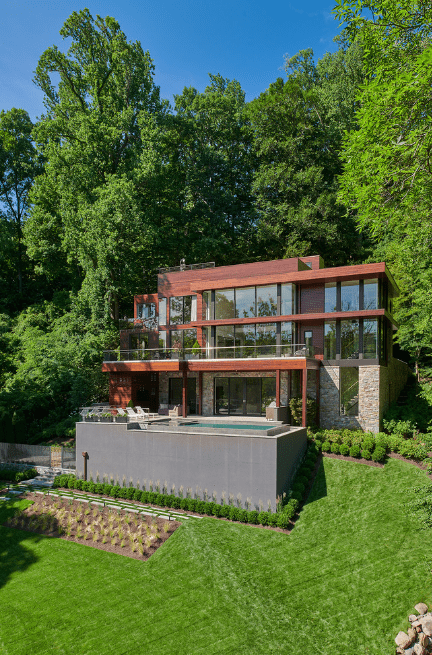Building a house on a sloping ground has its aesthetic advantages, but it is a complex project involving more details, complexity and additional costs compared to a house on a regular surface. However, a sloping land can be both a gift and a problem.
In this article, I will expose several essential aspects in building a house on a slope.
Photo by M.S. Vicas Interiors – Browse exterior home photos
1| Buying a Sloping Land
If you are going to buy a sloping land to build your new home, try to negotiate price, suggesting a smaller amount of money than the asking price. However, there are fewer people willing to start a project on a sloping land, which is to your advantage.
2| Positioning the House on a Slope
A sloping land poses several problems in terms of pouring the foundation and the placement of the house. It is quite possible, for example, due to inclination of the land, to be necessary changing the access path from the street, or rethinking the house partitioning so that your construction to be well proportioned.
3| Drainage System
A house built on the side of a hill should have a very good system of water collection, and a solid and sturdy foundation. Otherwise, the water drained from the top of the hill can flood the court and break down the house foundation. Instead, a house built on top of sloping land is not at risk of flooding, but it should be built on a solid, flat surface, where there is no risk of landslides. Consolidation will be made through a retaining wall or terracing.
4| The Aesthetic Function of a House Built on a Slope
A sloping land has the advantage of increasing the value of your new construction. The house will be beautiful and impressive with a total different and dynamic look on each façade, due to the differences in level. A house on a sloping land may have, for example, a living room with a lot of natural light and a large opening to a valley that can provide a great view.
5| How Will a Slope Affect Costs?
A house built on land sloping involve spending significantly more than one placed on a flat surface due to additional works and geotechnical study, land consolidation, construction of foundation depending on terrain slope, material transport, site organization, etc.. Experts believe that a house on sloping land cost at least 10% more than one, on a flat land.
House Tour of a Modern Home Interior with a Unique Look (howtobuildahouseblog.com)

